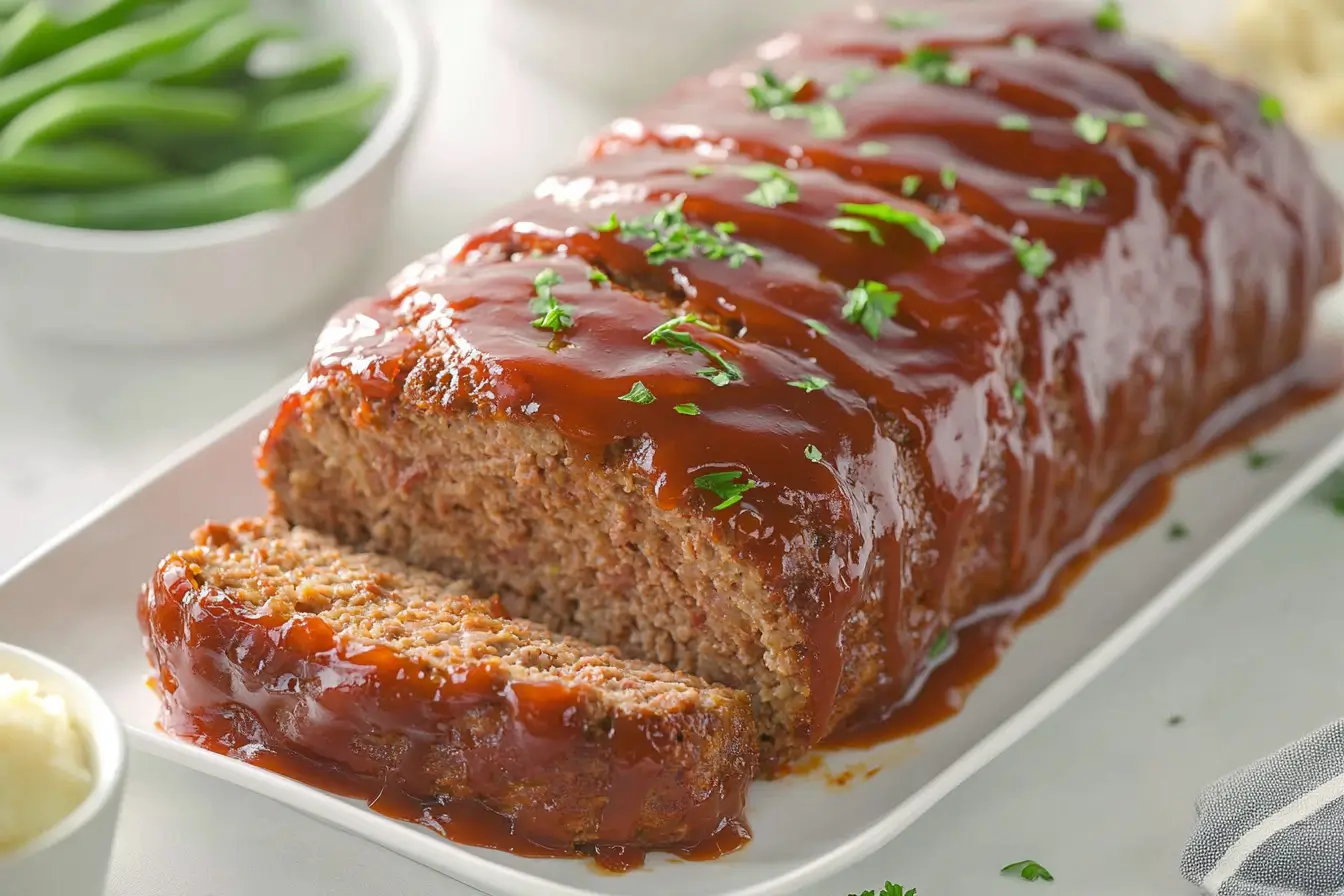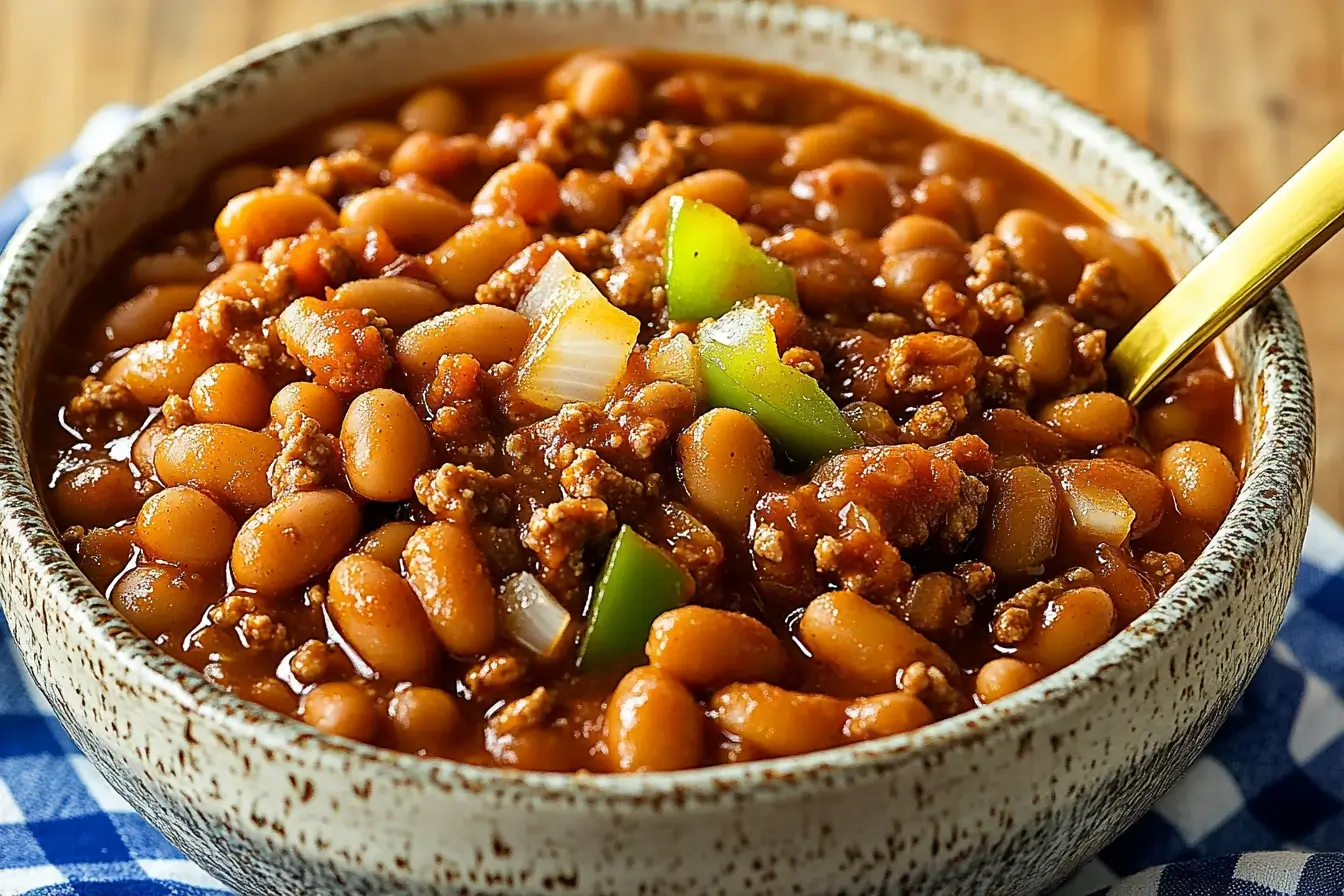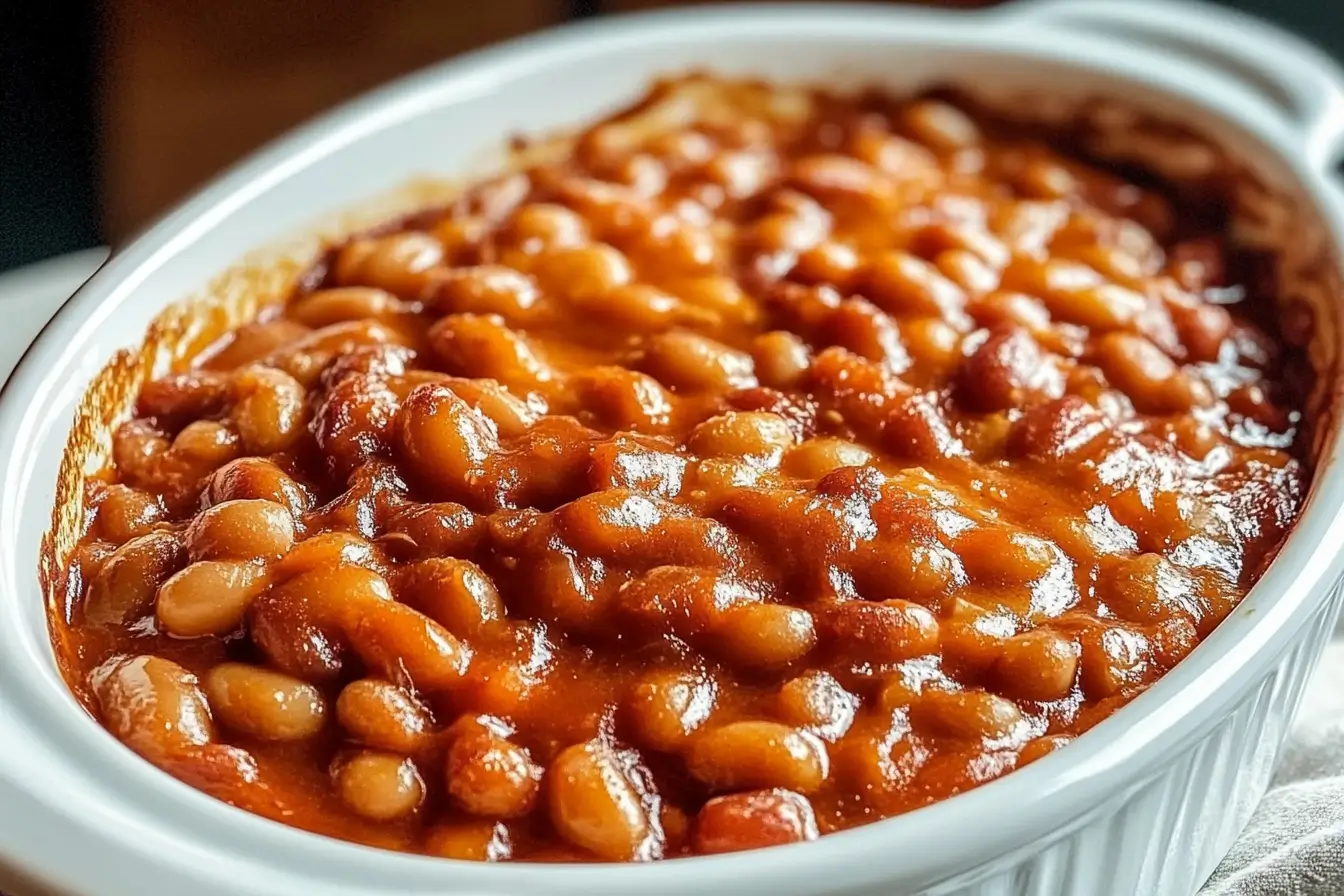Want a fancy beef roast without spending a lot? Poor Man’s Prime Rib is your answer. It’s a budget-friendly option that tastes like prime rib. It’s perfect for Sunday dinner or any special occasion.
This dish uses a chuck roast or sirloin tip. It turns an affordable cut into a tender, tasty meal. Each serving has 200-250 calories and 25-30 grams of protein. It’s also great with mashed potatoes or roasted veggies.
Poor Man’s Prime Rib is great for big groups or impressive meals. It’s simple to make and cooks slowly for tender meat. You can even freeze it for up to 3 months.
Ready to make a delicious dinner without spending a lot? Let’s get started!
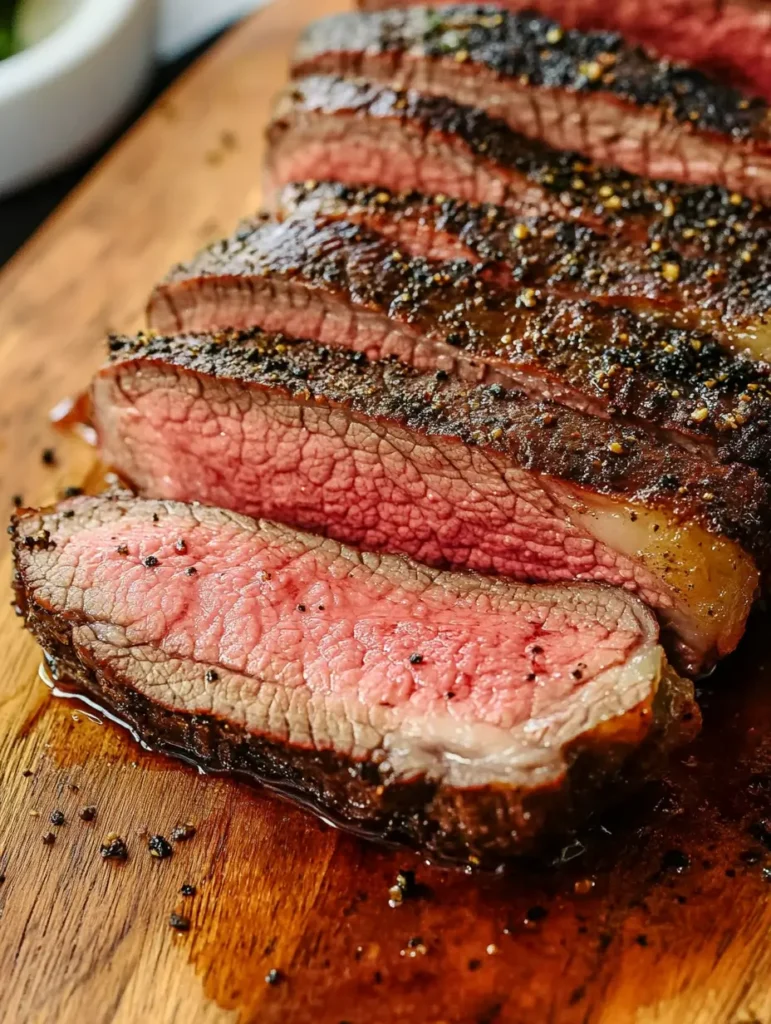
The Origins of Poor Man’s Prime Rib
Poor man’s prime rib started as a smart choice for families on a budget. It’s a tasty, affordable alternative to expensive roast beef.
Why It’s Called “Poor Man’s Prime Rib”
The name comes from its lower cost compared to prime rib. Using cheaper cuts like chuck or rump roast, cooks can make a dish that tastes like prime rib but costs less.
Historical Roots of Budget Cooking
This dish shows the creativity of budget cooking through history. Families have always looked for ways to make food last longer without losing flavor. Chuck roast, for example, is a favorite for its rich taste and low price.
Other budget-friendly options include:
- Rump roast: Leaner with moderate marbling and robust flavor
- Sirloin tip roast: Well-balanced flavor and easy to slice
- Eye of round roast: Most economical but requires precise cooking
Learning to cook these affordable cuts can make a meal that’s as good as fancy restaurant dishes. The secret is in the seasoning, cooking methods, and how you present it. This turns an economical roast beef into a gourmet dish.
Ingredients You’ll Need
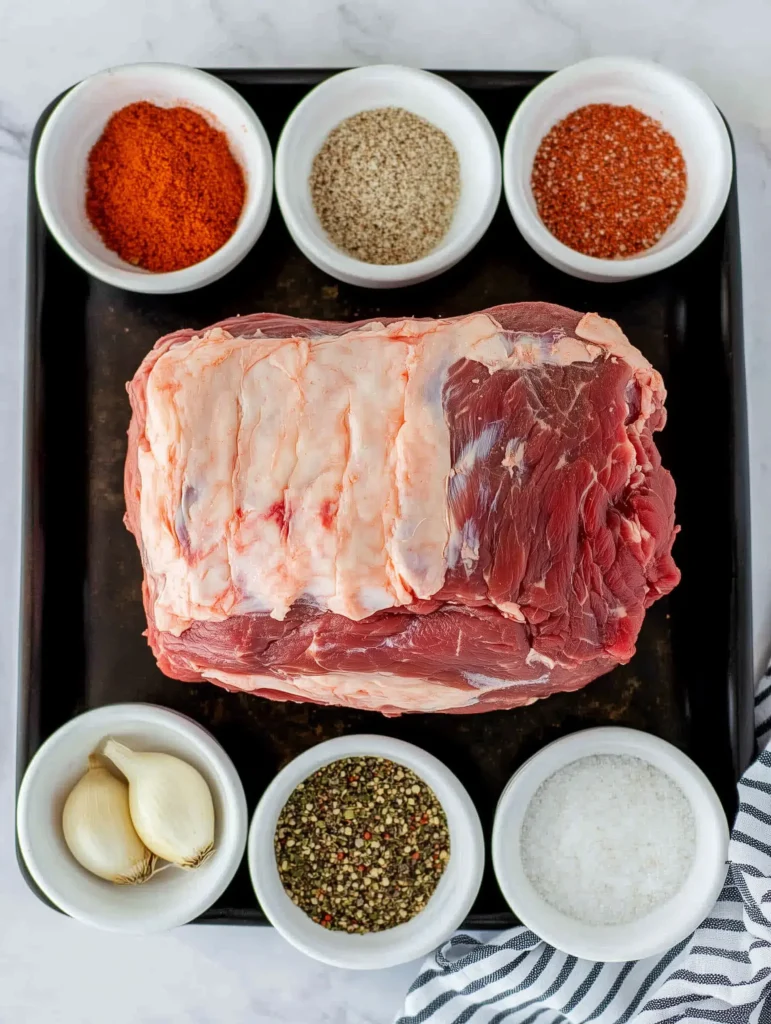
Starting a delicious poor man’s prime rib means picking the right meat. Look for a budget-friendly option that’s both tasty and tender.
Selecting the Best Cuts of Meat
For the best taste, choose a 3-pound beef eye of round roast. It’s affordable and full of flavor. Make sure it has lots of marbling for juiciness.
Budget-Friendly Alternatives to Rib Roast
If eye of round roast is hard to find, try these:
- Sirloin tip roast
- Beef shoulder roast prime
- Top sirloin roast
These options are cheaper but still tasty. But skip rump or bottom round roasts for better tenderness.
To season your roast, you’ll need:
- 1 teaspoon garlic powder
- 1 teaspoon onion powder
- Salt and pepper to taste
- Optional: fresh herbs like rosemary or thyme
Proper preparation and cooking are key to a great poor man’s prime rib. With these ingredients and the right method, you can make a meal that’s as good as the expensive kind.
Preparation Techniques for Poor Man’s Prime Rib
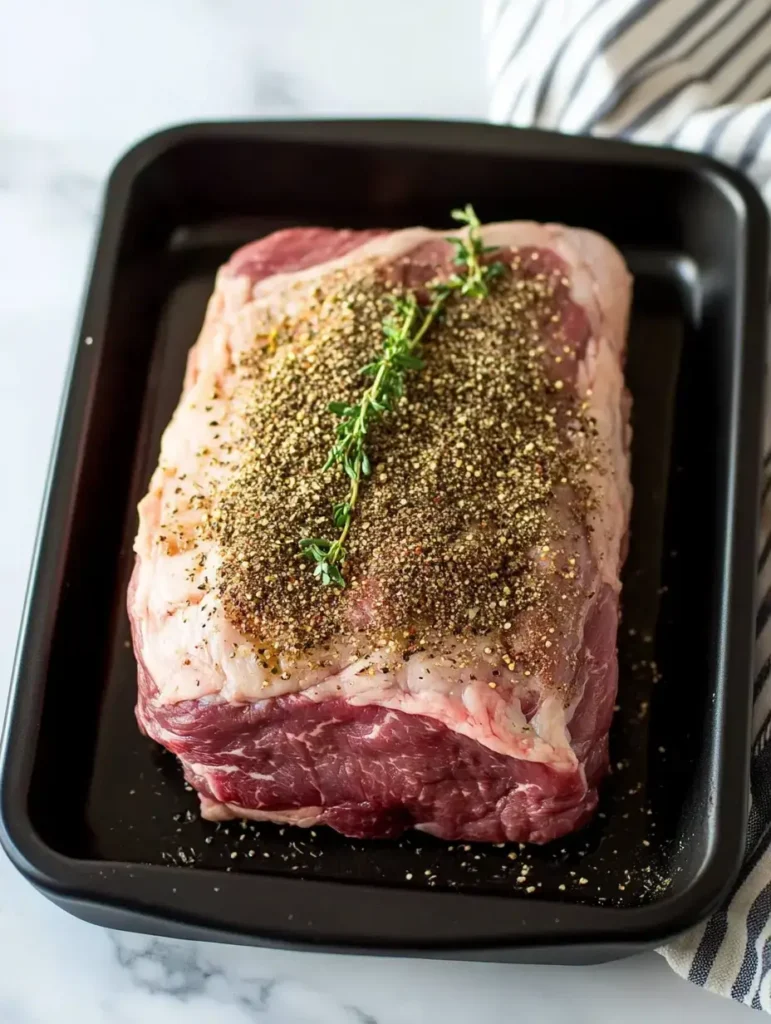
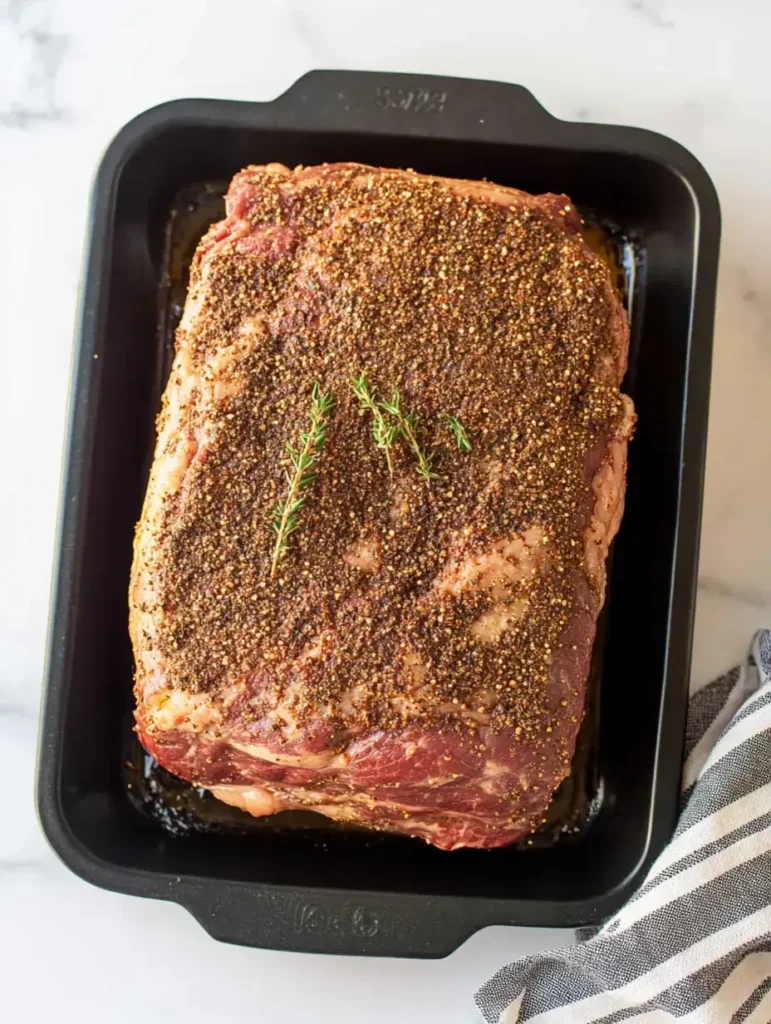
Getting ready for your easy oven roast is key to a delicious meal. The right tools and techniques make poor man’s prime rib preparation a breeze. Let’s dive into what you need and how to get started.
Essential Kitchen Tools and Equipment
To nail your poor man’s prime rib, you’ll need:
- A roasting pan with a cover
- Plastic wrap for marinating
- A reliable meat thermometer
- A food processor or spice grinder
Step-by-Step Preparation Tips
Follow these steps for the perfect poor man’s prime rib:
- Choose a 3-pound beef eye of round roast
- Mix 1 teaspoon each of garlic and onion powder
- Rub the spice mix all over the roast
- Wrap in plastic and refrigerate overnight
- Bring to room temp for 1-2 hours before cooking
Preheat your oven to 500°F. Place the roast in the pan and cook for 21 minutes. Lower the temp to 475°F and let it rest in the oven for 2.5 hours.
Don’t open the oven door! The internal temp should reach 145°F for safety. Remember, timing is crucial for the best results in your easy oven roast.
The Perfect Cooking Method
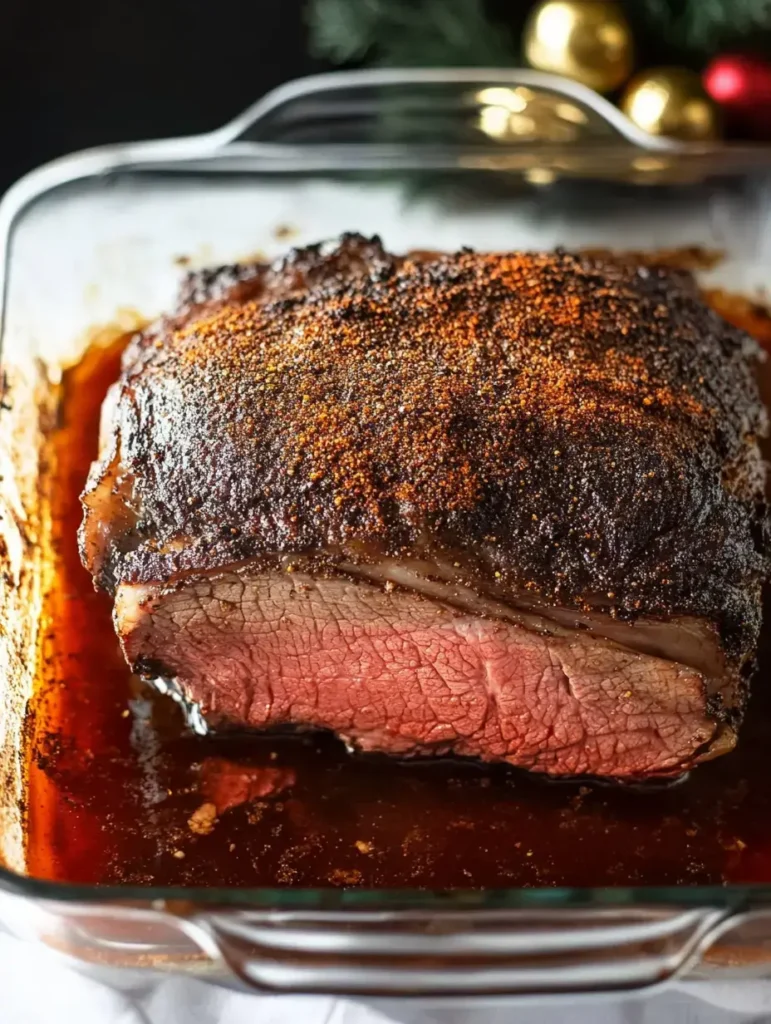
Learning how to cook prime rib is essential for a delicious dish. The classic oven method is a top choice for many. We’ll look at this method and others for the perfect Poor Man’s Prime Rib.
Oven Cooking: The Classic Approach
Start by preheating your oven to 350°F (175°C). Cook your roast for about 20 minutes per pound for medium-rare. A 4-pound roast will cook for about 80 minutes.
Use a meat thermometer to check the internal temperature. It should be 120°F for medium-rare.
Slow Cooker and Sous Vide Options
For a hands-off option, try a slow cooker. Cook your Poor Man’s Prime Rib on low for 6-8 hours. Sous vide cooking gives precise temperature control for even cooking.
Remember to let your roast rest for 10-15 minutes before carving. This makes the meat more flavorful and tender. With these methods, you can make a tasty, affordable meal like a high-end steakhouse.
Seasoning and Flavor Enhancements
The right seasoning can turn your poor man’s prime rib into something amazing. Let’s look at some tasty ways to make your beef roast stand out.
Recommended Herbs and Spices
A great seasoning mix for poor man’s prime rib includes rosemary, thyme, and garlic powder. Smoked paprika adds a rich flavor. Don’t forget salt and pepper, and add some cayenne for a spicy kick.
Mix these spices in a food processor. This will create a homemade rub that will make your taste buds happy.
Homemade Marinades and Rubs
Beef roast marinades are essential for adding flavor. Here’s a simple yet tasty blend:
- 1/2 cup olive oil
- 4 cloves minced garlic
- 2 tablespoons kosher salt
- 1 tablespoon each of dried rosemary and thyme
Mix these ingredients and coat your roast well. For the best flavor, marinate it overnight in the fridge. This lets the flavors soak deep into the meat, making your meal as good as any fancy steakhouse.
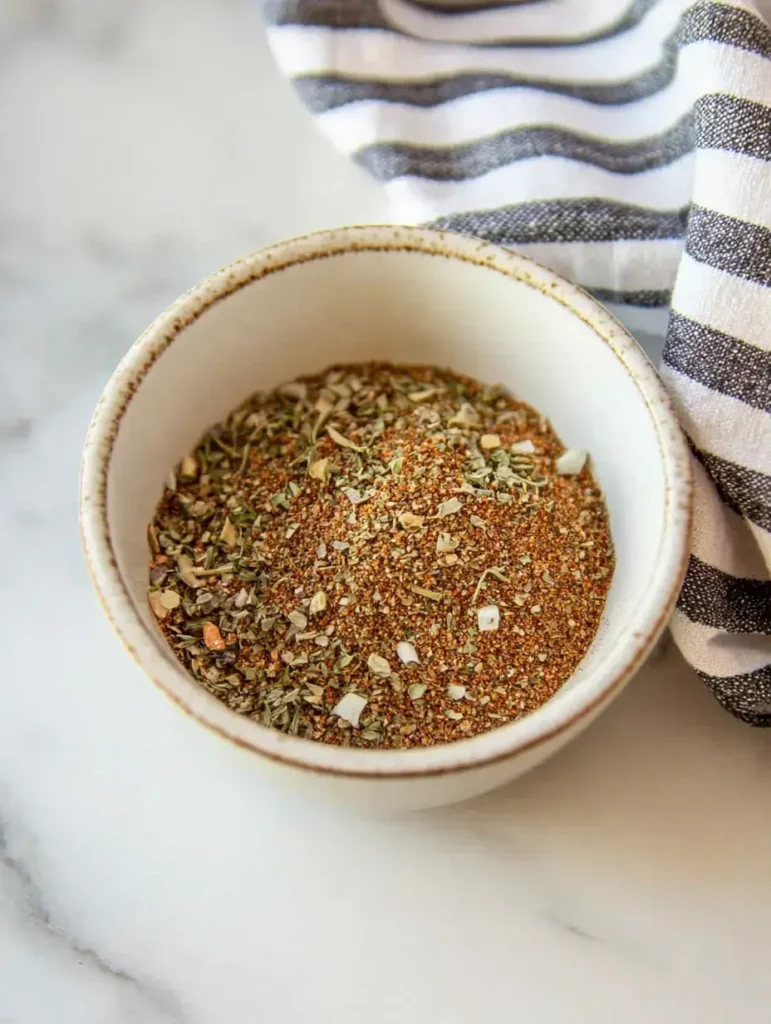
Pairing Poor Man’s Prime Rib with Side Dishes
Choosing the right side dishes can make your Poor Man’s Prime Rib a feast. Let’s look at both traditional and creative options to go with your affordable Sunday roast.
Traditional Accompaniments
Classic sides are great with Poor Man’s Prime Rib. Mashed potatoes are a favorite, offering a creamy contrast to the meat. Roasted veggies like carrots, Brussels sprouts, or green beans add color and nutrition.
Creative Pairing Ideas
For a twist on traditional sides, try these affordable Sunday roast sides:
- Honey-glazed carrots for a sweet touch
- Garlic roasted mushrooms to enhance the beefy flavor
- Crispy roasted potatoes as an alternative to mashed
- Sautéed spinach with garlic for a lighter option
Don’t forget sauces! A homemade horseradish cream or red wine reduction can make your meal better. The key is to balance flavors and textures for a memorable meal without spending a lot.
Tips for Serving and Presentation
Learning how to serve prime rib can make your meals better. The secret to a great roast beef presentation is in how you slice and plate it. Let’s see how to get that restaurant look at home.
Slicing Techniques for Maximum Tenderness
To keep your roast tender and juicy:
– Let it rest for 15 to 20 minutes before slicing.
– Use a sharp knife to cut thin slices against the grain.
– Aim for 8 to 12 ounces per person.
Plating Ideas for a Restaurant-Quality Look
Here’s how to make your roast beef look great:
– Arrange slices on a warm platter in a fan shape.
– Add fresh herbs like rosemary or thyme for garnish.
– Serve colorful side dishes to contrast with the meat.
– Use a carving board with a groove to catch the drippings.
For special occasions, try different sauces. Kansas City-style BBQ sauce goes well with hickory-smoked beef. Carolina mustard sauce is great with apple wood-smoked cuts. Remember, how you present it makes a big difference.
Common Mistakes to Avoid
Cooking prime rib can be tricky. Many home chefs make mistakes that can ruin a pricey cut of meat. Let’s look at some common mistakes and how to avoid them.
Overcooking or Undercooking
One big mistake is not controlling the temperature right. Use a digital meat thermometer to get it just right. For medium-rare, aim for 130-134°F. Remember, the meat will cook a bit more as it rests, adding 5-7°F.
Skipping the Resting Period
Don’t rush to slice your roast! Resting is key for juicy meat. Let it sit for 15-20 minutes after cooking. This makes sure each bite is moist and full of flavor.
Other mistakes to avoid:
- Not bringing the meat to room temperature before cooking
- Opening the oven too often, causing heat loss
- Skipping the seasoning or searing step
- Forgetting to use a meat thermometer
By avoiding these common mistakes, you’ll be on your way to serving a restaurant-quality prime rib at home. Remember, practice makes perfect. With time and attention, you’ll master the art of roasting beef.
How to Store and Reheat Leftovers
Properly storing roast beef lets you enjoy your Poor Man’s Prime Rib for days. Store leftovers in an airtight container in the fridge for up to 4 days. For longer storage, wrap it tightly in plastic wrap and foil, then freeze for up to 3 months.
Best Practices for Freezing
To keep quality when freezing:
- Slice the roast beef before freezing for easier portioning
- Remove as much air as possible from the packaging
- Label containers with the date to track freshness
- Freeze quickly to preserve texture and flavor
Reheating Techniques for Maintaining Flavor
When reheating prime rib, aim to warm it without overcooking. Try these methods:
- Oven method: Heat at 250°F until the internal temperature reaches 120°F
- Stovetop: Warm slices in a pan with a bit of beef broth
- Microwave: Use short bursts of heat, checking frequently to avoid drying out
For the best results, thaw frozen roast beef in the fridge overnight before reheating. This ensures even warming and keeps the meat juicy. Remember, reheating to the right temperature is key to maintaining flavor and texture of your Poor Man’s Prime Rib.
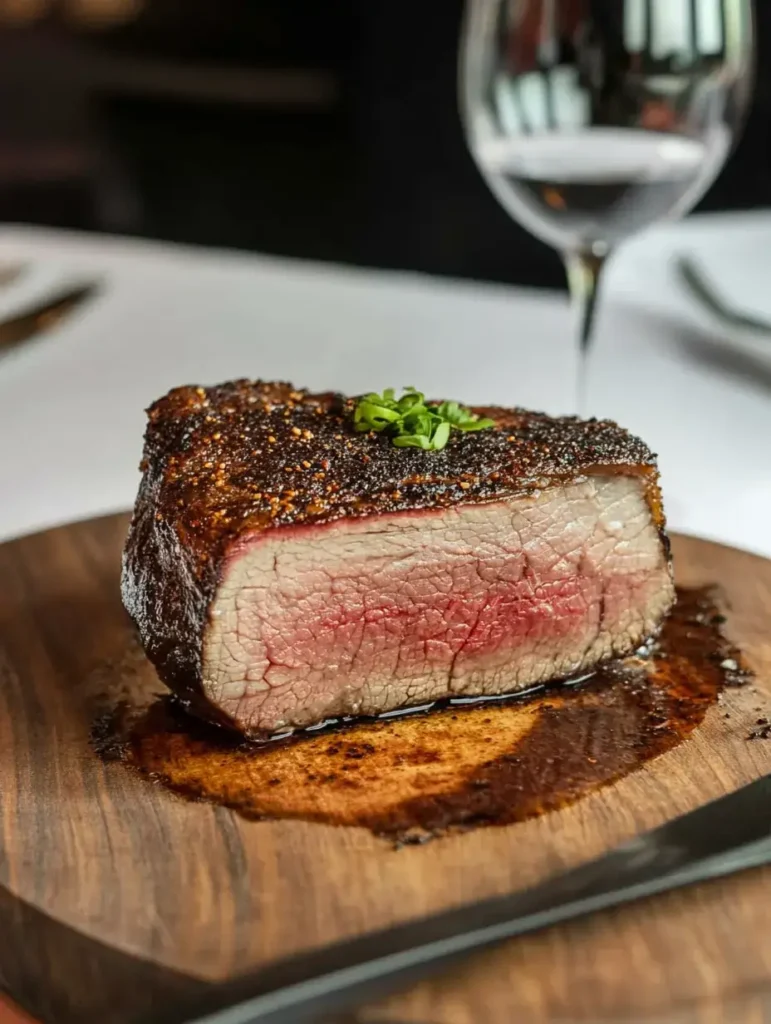
Health Benefits and Nutritional Insights
Poor Man’s Prime Rib is a nutritional powerhouse. It’s a budget-friendly dish that’s rich in beef nutritional value. It’s a great choice for those who love meat and care about their health.
Protein-Rich and Nutrient-Dense
Lean beef in Poor Man’s Prime Rib is packed with protein. A 3.5-ounce serving has about 26 grams of high-quality protein. This is perfect for building and maintaining muscle.
Beef is also full of vitamins and minerals. It has B12, zinc, selenium, and iron. These nutrients are important for health and preventing anemia.
Comparisons to Other Cuts of Meat
Poor Man’s Prime Rib is made from leaner cuts. It has about 10 grams of fat per 100 grams, with 4.5 grams being saturated. This makes it better for your heart than fattier cuts.
- Contains bioactive compounds like creatine and taurine
- Provides conjugated linoleic acid (CLA), which may have health benefits
- Rich in carnosine, which can improve exercise performance
While some studies have mixed results on red meat and heart disease, lean cuts like Poor Man’s Prime Rib are good. Just remember to enjoy it in moderation.
FAQs
Curious about poor man’s prime rib? Let’s explore some common roast beef cooking questions. This will help you make this budget-friendly meal a success.
What is the best cut for Poor Man’s Prime Rib?
Sirloin tip roast, eye of round, or top sirloin are excellent choices. They offer great flavor and tenderness without costing too much. Top sirloin is especially good, thanks to its fat marbling that keeps it juicy.
Can you cook it without a meat thermometer?
While a meat thermometer is best, you can guess the doneness. Cook for about 20 minutes per pound at 375°F. The meat should feel slightly firm but still soft when pressed.
How do you achieve a perfect crust?
Begin with a dry roast and season it well. Heat your oven to 450°F and sear the meat for 15 minutes. Then, lower the temperature to 325°F to finish cooking. This method makes a delicious, crispy crust.
Is it suitable for special occasions?
Absolutely! Poor man’s prime rib is a gourmet treat at a lower cost. It’s ideal for family gatherings or dinner parties. Pair it with classic sides like roasted vegetables and mashed potatoes for a memorable meal.
The secret to a fantastic poor man’s prime rib is in the prep and cooking. With practice, you’ll serve top-notch roast beef from your kitchen.
Why Poor Man’s Prime Rib is Worth Trying
Poor Man’s Prime Rib is a tasty and affordable beef roast. It’s made with chuck eye steak, offering a rich flavor at a lower cost. This cut is unique, available in only two parts per cow.
This affordable roast is also packed with nutrients. A 3.5-ounce serving has 240 calories, 23 grams of protein, and important minerals like iron and zinc. Choose cuts with marbling, bright red color, and the right thickness for the best taste.
Cooking methods for this budget-friendly option are varied. You can grill for a smoky taste, pan-sear for a crispy crust, or broil in the oven. Using a meat thermometer ensures the meat is cooked just right. Always let the meat rest after cooking for the juiciest results.
Poor Man’s Prime Rib shows you can have a great meal without spending a lot. It’s a smart choice for a family dinner or a special event. This affordable roast is sure to delight everyone.

